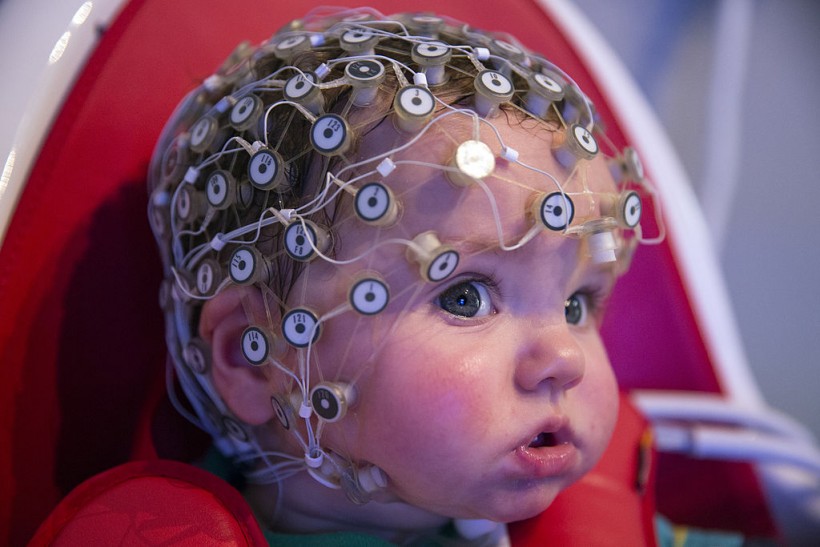For years, scientists have extracted organoids in labs from human cells and use them to mimic and research the body's internal structures for insight into diseases and remedies. Yet, each tiny simulacrum is normally not long-lived.

LONDON, ENGLAND - MARCH 03: Leo, aged 9 months, takes part in an experiment at the 'Birkbeck Babylab' Centre for Brain and Cognitive Development, on March 3, 2014 in London, England. The experiment uses an electroencephalogram (EEG) to study brain activity whilst the baby examines different objects of varying complexity.
But now, researchers at the University of California, Los Angeles (UCLA) and Stanford University have discovered that when given enough time, small, 3D brains will expand and evolve in ways that strongly resemble the development of the real human brain.
They showed that the mini-brains adopted an internal clock that aligns with the phases of conception and after birth and through childhood by taking genetic analyses over 20 months from organoids formed from induced pluripotent stem cells.
Daniel Geschwind, M.D., Ph.D., Professor in Human Genetics at the David Geffen School of Medicine and director of the Institute for Precision Health at UCLA, told Eurkalert that no one has yet grown and classified these organoids that could mostly mimic human brain production in a laboratory setting.
Will This 'Brain in a Dish' Shed Light on Alzheimer's, Schizophrenia?
Brain organoids have historically been used to research psychiatric or developmental conditions such as epilepsy, autism, and schizophrenia. Still, their existence in a laboratory dish has been believed to be trapped in a protracted early fetal development environment.
The researchers suggest that these organoids may be used with a little bit of a drive to study further disorders that occur in an individual's life even later, such as Alzheimer's Disease and dementia.
"There is huge interest in stem cell models of human disease," Geschwind said. "This work represents an important milestone by showing which aspects of human brain development are modeled with the highest fidelity and which specific genes are behaving well in vitro and when best to model them," he added.
ALSO READ: Lab-Grown Brains Raise Ethical Questions as They Become Sentient
Equally significant, scientists had to include a basis for evaluating how effectively in vitro models predict in vivo production and function based on independent genomic analyses.
Paper author and biologist Aaron Gordon, also of UCLA, told Daily Mail that these 3D brain organoids obey an internal clock that advances parallel to what happens within a live organism in a laboratory setting.
He said this extraordinary result indicates that the organoids in the brain achieve post-natal maturity in culture for around 280 days and then continue modeling features of the child's brain, including documented physiological improvements in the signaling of neurotransmitters.
Also, the researchers outlined a method for genetic analysis, called GECO, for Gene Expression in Cortical Organoids, which tests how well an in vitro cellular model aligns with the in vivo stages of a developing human brain, utilizing data to map neuronal growth from the multicenter BrainSpan initiative.
ALSO READ: Scientists Explored the Use of 'Organoids' For a More Accurate Cancer Therapies to Treat Tumors
Check out more news and information on Organoids in Science Times.














